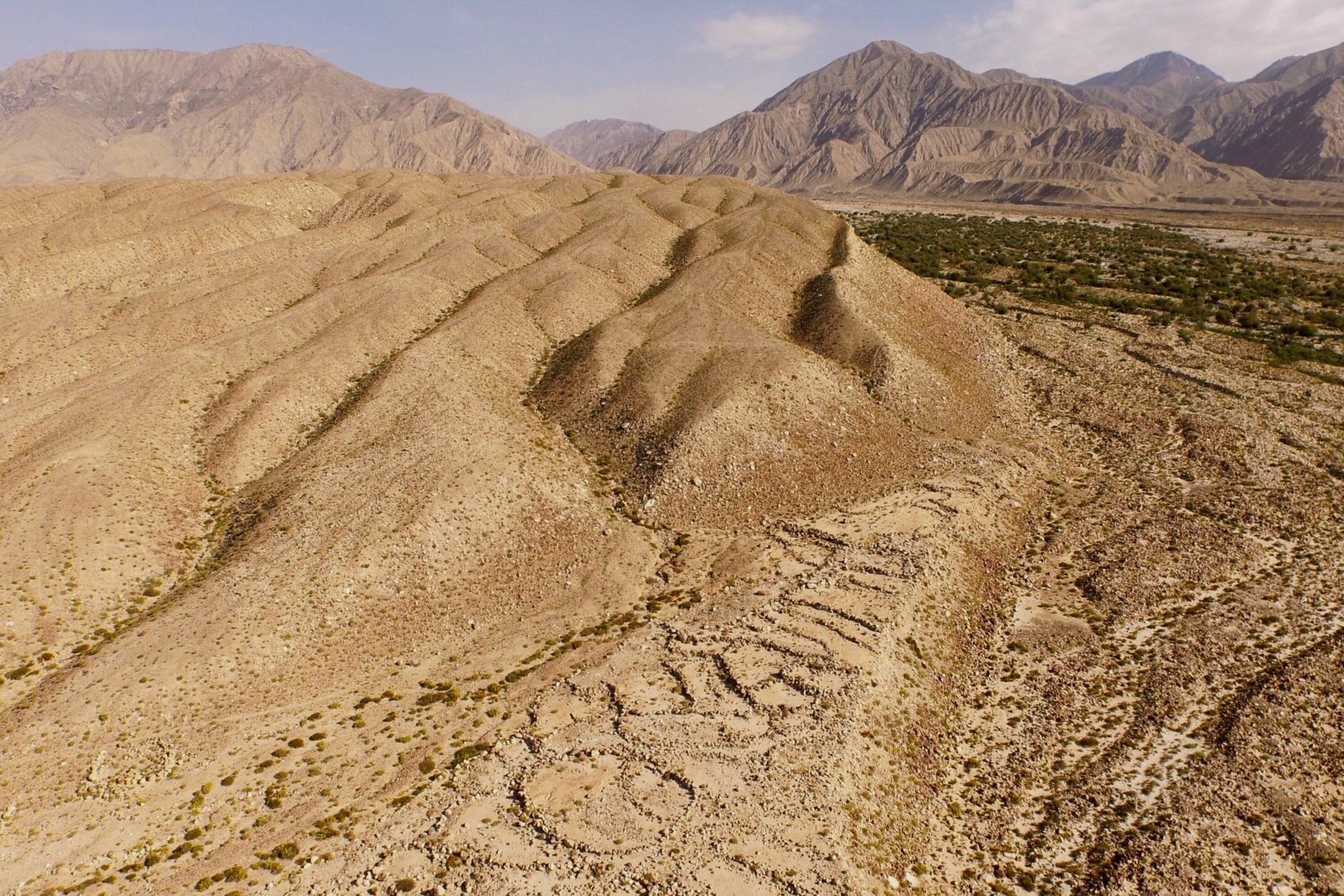
MODELING OUR FUTURE
GIS and Remote Sensing are the primary tools we employ at the SAIE lab to study the spatial and temporal intersection of human and environmental landscapes. Most of the analytical and material aspects of our research are tied together spatially and facilitate a holistic way of interpreting the complexity of cultural geography through time. The projects linked here focus directly on the spatial analytical methods we use to simulate and model various aspects of archaeological, climatic, ecological, and social phenomena from prehistory to the present day.
In partnership with the National Center of Archaeology (Uzbekistan) and the Tang Center for Silk Road Studies, the SAIE Lab is using advanced techniques for geophysical survey and excavation to document the remains of an ancient medieval city at Tugunbulak, Uzbekistan. This can provide many new insights into our understanding of medieval mountain communities and their engagement in trade, production, and urban development along the ancient Silk Routes of Central Asia.
Our interdisciplinary project aims to understand societal strategies to adapt to systemic shocks across APAC. Central to this project are three questions: 1) What are the key variables that influence societal resilience in the face of different types, durations, and combination of shocks across diverse ecological and societal contexts? 2) What is the frequency of stand-alone, sequential, or concurrent shocks in APAC and how does the periodicity of experienced shocks shape societal resilience? 3) What are the implications of analysing societal resilience at different spatio-temporal scales and units of analysis?
With past support from the National Geographic Society, the SAIE Lab used high-tech analysis tools for groundbreaking research on an ancient city high in the mountains of Uzbekistan. Site-wide geophysical survey revealed the dense architectural structure of the town center, which spans roughly 7ha at its core. Urban features such as a central mound (citadel), a large industrial workshop area, and a cemetery with over 350 individual burials all frame Tashbulak within a broader syntax of medieval urbanism and early Islamic conversion in the region. Tashbulak is currently one of the only known high mountain town centers constructed and occupied during the time of the Qarakhanid Empire.
Archaeological excavations at the site complex of “Dali” – located in southeastern Kazakhstan – provide a rich picture of Bronze Age life spanning from the early third to late second millennia b.c. Nearly ten years of research at the site have produced an abundant assemblage of architectural remains, ritual and burial contexts, human and animal ancient DNA, as well as related economic, ceramic, and other forms of materiality.
As part of the collaborative work between SAIE lab and archaeologists from Sichuan University (founded by the National Social Science Fund of China), we conducted an analysis on the ceramic materials of the Bangga site. The excavations and analysis of Bangga site provided evidence that the site is an agropastoral settlement in the first millennium BC.
Through the innovative use of "flow accumulation", the SAIE lab study maps the annual migration routes of Inner Asian mountain pastoralists from elevations of 750m to 4,000m to shed light on the evolution of “Silk Roads.” After aggregating 500 model iterations, we uncovered a high-resolution flow network that simulates how centuries of seasonal nomadic herding could have shaped discrete routes of connectivity across the seemingly uncrossable mountains of Asia. This sheds light on the possibility that the elevated stretches of the Silk Road may have evolved from ancient nomadic herding trails in Inner Asia.
The SAIE lab partnered with the Maldives Heritage Survey project from 2017-2019 to build 3D digital models using a range of UAV and terrestrial modeling methods to digitally document the full spectrum of cultural heritage by producing an open-access archive that might weather the threats of rising sea levels, climate change, and population displacement.
Geographic Information Systems (GIS), remote sensing, and computer-assisted simulation, play an equally fundamental role in formulating explanations of the past. When attempting to document the expanse of a mobile society across a given landscape, one must consider various factors that may have played a role in human experiences at different times and locales. These factors range from ecological dynamics such as seasonality, climate, and terrain, to social and political aspects of specific archaeological feature types.
The site’s importance in the landscape of the Koksu River Valley can be indexed by two large associated cemeteries, Begash-2 and Begash-3, located close to the settlement. Test excavations in 2002 and 2005 revealed stone cist burials characteristic of the late Bronze Age, as well as kurgan burials that illustrate continuity use of the burial ground in the Iron Age (based on regional analogues).









